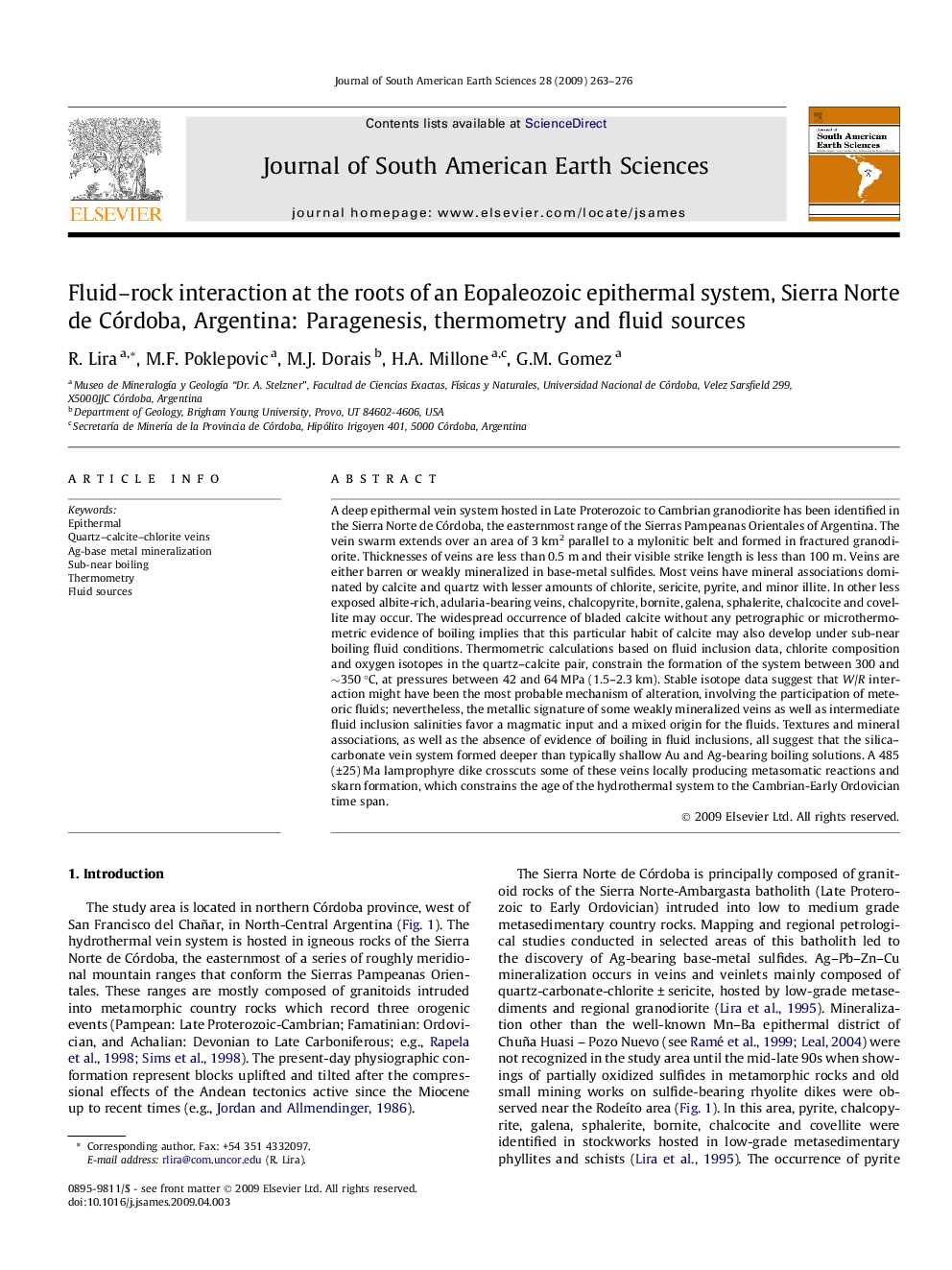| کد مقاله | کد نشریه | سال انتشار | مقاله انگلیسی | نسخه تمام متن |
|---|---|---|---|---|
| 4682850 | 1348948 | 2009 | 14 صفحه PDF | دانلود رایگان |

A deep epithermal vein system hosted in Late Proterozoic to Cambrian granodiorite has been identified in the Sierra Norte de Córdoba, the easternmost range of the Sierras Pampeanas Orientales of Argentina. The vein swarm extends over an area of 3 km2 parallel to a mylonitic belt and formed in fractured granodiorite. Thicknesses of veins are less than 0.5 m and their visible strike length is less than 100 m. Veins are either barren or weakly mineralized in base-metal sulfides. Most veins have mineral associations dominated by calcite and quartz with lesser amounts of chlorite, sericite, pyrite, and minor illite. In other less exposed albite-rich, adularia-bearing veins, chalcopyrite, bornite, galena, sphalerite, chalcocite and covellite may occur. The widespread occurrence of bladed calcite without any petrographic or microthermometric evidence of boiling implies that this particular habit of calcite may also develop under sub-near boiling fluid conditions. Thermometric calculations based on fluid inclusion data, chlorite composition and oxygen isotopes in the quartz–calcite pair, constrain the formation of the system between 300 and ∼350 °C, at pressures between 42 and 64 MPa (1.5–2.3 km). Stable isotope data suggest that W/R interaction might have been the most probable mechanism of alteration, involving the participation of meteoric fluids; nevertheless, the metallic signature of some weakly mineralized veins as well as intermediate fluid inclusion salinities favor a magmatic input and a mixed origin for the fluids. Textures and mineral associations, as well as the absence of evidence of boiling in fluid inclusions, all suggest that the silica–carbonate vein system formed deeper than typically shallow Au and Ag-bearing boiling solutions. A 485 (±25) Ma lamprophyre dike crosscuts some of these veins locally producing metasomatic reactions and skarn formation, which constrains the age of the hydrothermal system to the Cambrian-Early Ordovician time span.
Journal: Journal of South American Earth Sciences - Volume 28, Issue 3, October 2009, Pages 263–276